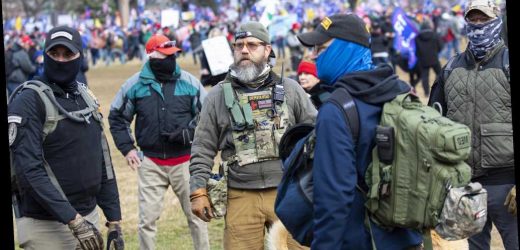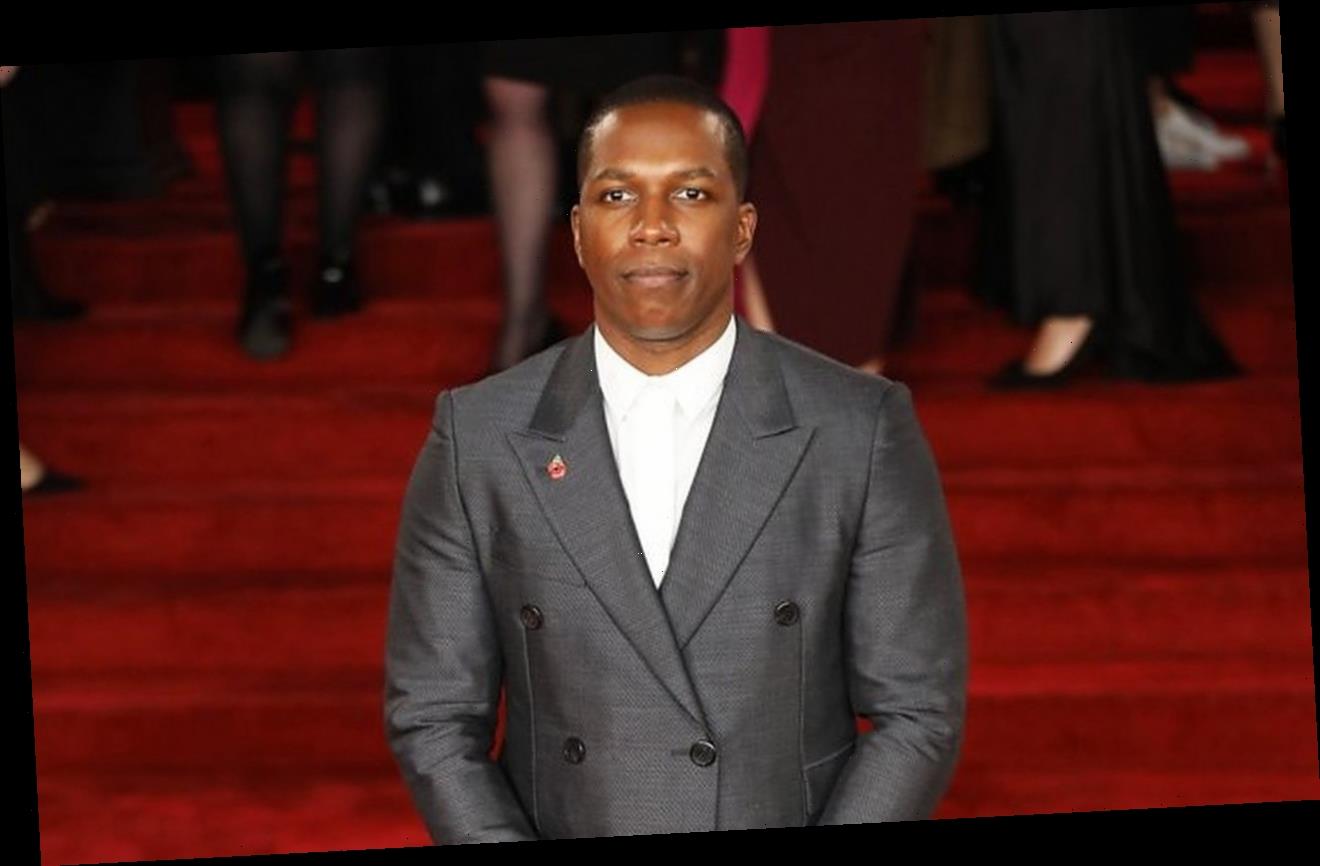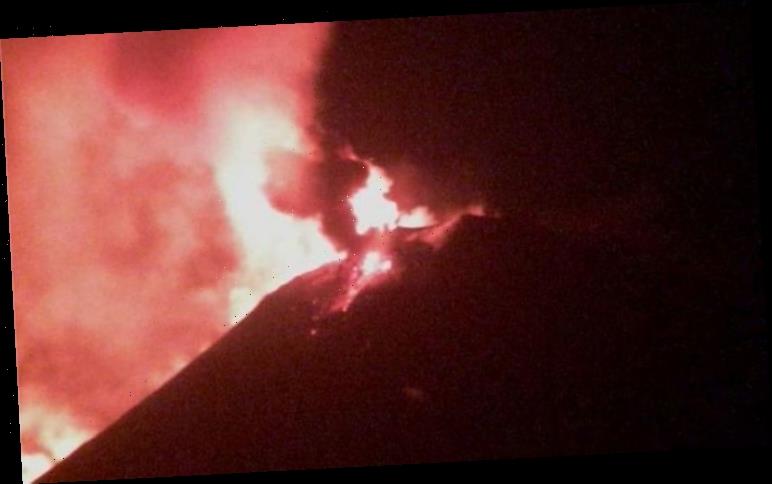While much of the focus of the investigations into January 6th’s domestic terrorist attack on the U.S. Capitol has centered on followers of the internet conspiracy theory QAnon, details are emerging about the potential involvement of the Oath Keepers, a right-wing militia, in the recent insurrection. This development comes following the January 19th unsealing of a criminal complaint and affidavit accusing Thomas Edward Caldwell, 65, of Clarke County, Virginia — who investigators suspect to be a leader of the group — of conspiring to commit a federal offense, in addition to obstruction of an official proceeding, unlawful entry into a restricted building, and violent or disorderly conduct. (Though Caldwell has not pleaded, he did say in a court appearance that “every single charge is false.”)
Two other members of the Oath Keepers have also been changed with related offenses, Reuters reports. Additional charges are likely to follow, as the FBI continues to take a closer look at the right-wing extremist group’s potential role in the attack — specifically in terms of its organization and premeditated violence, according to the New York Times. But who are the Oath Keepers and what do they stand for? Here’s what you need to know about the militia group, its members, and its stances.
Who are the Oath Keepers?
Founded in Las Vegas in 2009, the Oath Keepers is “one of the largest radical anti-government groups in the U.S. today,” according to the Southern Poverty Law Center. Like the Tea Party — which began the same year — the Oath Keepers formed as a response to the election of Barack Obama, as well as the subsequent policies enacted by his administration.
While asserting that they take action to defend the Constitution, in reality, “the entire organization is based on a set of baseless conspiracy theories about the federal government working to destroy the liberties of Americans,” the SPLC explains. And although the Oath Keepers will accept anyone who wants to become a member, their recruitment strategy explicitly targets current and former members of the military and law enforcement, as well as first responder personnel.
What oath does the group’s name refer to?
When a person joins the Oath Keepers, they must vow to uphold the oaths they took when they began their careers in law enforcement or the military, in order to “support and defend the Constitution of the United States against all enemies, foreign and domestic.” While that may sound vague, the organization has a list of 10 “Orders We Will Not Obey,” based on their perceived threats from the government, rooted in conspiracy theories. According to the SPLC, these include forcing Americans into detention camps, imposing martial law, and disarming all civilians.
What’s this about a militia?
The Oath Keepers is a militia group — meaning that they engage in military-style training and activities, including wearing uniforms and taking up arms when they see fit. Though this particular organization has only been around since 2009, the Oath Keepers is part of the wider militia movement, which got its start in the mid-1990s as a reaction to federal gun control measures. While the movement declined considerably during George W. Bush’s two terms in office, it picked right back up again — and has enjoyed a resurgence — since Obama took office in 2009.
Since 2016, groups in the militia movement like the Oath Keepers and the Three Percent United Patriots have been faithful supporters of Trump. This has resulted in a shift from being anti-government, to devoting their time and energy to opposing movements like Black Lives Matter, as well as state-level COVID-19 public health measures. And while all 50 states prohibit private, military-style activities, local and state governments haven’t done much to enforce these laws or stop the groups, USA Today reports.
How many Oath Keepers are there?
Though the Oath Keepers’ official membership data are closely guarded by the organization, the SPLC reports that in 2016, the group claimed that it counted tens of thousands of present and former law enforcement officials and military veterans among its members. However, in 2020, the Anti-Defamation League (ADL) estimated that there are between 1,000 and 3,000 Oath Keepers in total, while noting that “the group’s influence extends well beyond that number,” thanks to their strong online presence. Even so, these estimates would make the Oath Keepers larger than any single traditional militia group in the United States, according to the ADL.
Meanwhile, active-duty soldiers who are found to have joined militias made up of private citizens may be demoted or lose security clearances for their involvement with these groups. The Oath Keepers get around this by encouraging current members of the U.S. military to join without using the Oath Keepers’ name, Mother Jones reported in 2010, along with a message from a leader of the group stipulating that “as a matter of strategy, it is best to keep the two separate.”
What have the Oath Keepers been up to?
The Oath Keepers first began to garner national attention in 2014, when they involved themselves in armed disputes between ranchers (or miners) and federal agencies. But as they gained notoriety throughout the country, the Oath Keepers fell out of favor with other anti-government extremist groups that same year, after they decided to retreat from the Bundy Ranch standoff — something the ADL attributes to their fear of the possibility of drone strikes.
Four months later, heavily-armed members of the Oath Keepers traveled to Ferguson, Missouri during protests following the police killing of Michael Brown. The group patrolled the area, claiming that they were there to protect local businesses from rioters, according to the SPLC. The Oath Keepers provided similar unsolicited “security” for communities and businesses during the demonstrations against racial injustice in 2020.
During what would turn out to be an exceptionally busy year, the militia also lent its armed support to several of the protests against Covid-19 “lockdowns” across the country. Subsequently, the Oath Keepers spent much of the remaining run-up to the November 2020 election spreading misinformation about how the “Marxist left” was trying to seize control of the country. This resulted in the organization getting banned from Twitter in September — almost four months to the day before the president they so fervently supported met the same fate.
Source: Read Full Article


